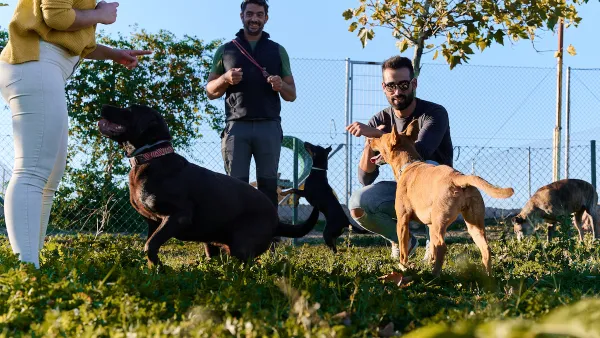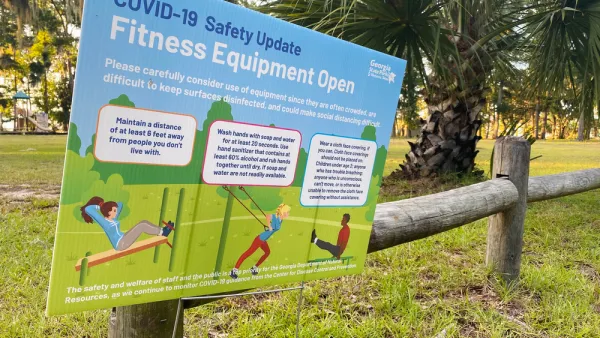Researchers are starting to understand how people with conditions like autism experience cities differently — and how to design for the neurodiverse brain.

“Cities and schools are not typically designed by, or for, people with conditions such as autism,” writes Alexandra Lange in Bloomberg CityLab. Now, architects are working to change that by understanding how neurodivergent people experience cities and designing spaces that address their needs.
A study conducted in a New York City public school surveyed students about their experience and prototyped designs that aim to engage kids in ways that are comfortable for them. The study included an engagement exercise on soundscapes, which had students identify sounds on their playground. The exercise resulted in the installation of three sound “pods” where students can listen to soothing soundscapes and buffer outside noise.
“The result, they hope, will be prototypes designed for typical urban conditions like playgrounds or plazas, made with a broader understanding of what urban comfort can be. This might be noise-buffering. It might be more welcoming signage. It could be plants, maybe some softer seating.” Like other design elements geared toward the needs of specific groups, these interventions would make public spaces more pleasant for all users.
FULL STORY: How to Build a Neurodiverse City

National Parks Layoffs Will Cause Communities to Lose Billions
Thousands of essential park workers were laid off this week, just before the busy spring break season.

Retro-silient?: America’s First “Eco-burb,” The Woodlands Turns 50
A master-planned community north of Houston offers lessons on green infrastructure and resilient design, but falls short of its founder’s lofty affordability and walkability goals.

Delivering for America Plan Will Downgrade Mail Service in at Least 49.5 Percent of Zip Codes
Republican and Democrat lawmakers criticize the plan for its disproportionate negative impact on rural communities.

Test News Post 1
This is a summary

Test News Headline 46
Test for the image on the front page.

Balancing Bombs and Butterflies: How the National Guard Protects a Rare Species
The National Guard at Fort Indiantown Gap uses GIS technology and land management strategies to balance military training with conservation efforts, ensuring the survival of the rare eastern regal fritillary butterfly.
Urban Design for Planners 1: Software Tools
This six-course series explores essential urban design concepts using open source software and equips planners with the tools they need to participate fully in the urban design process.
Planning for Universal Design
Learn the tools for implementing Universal Design in planning regulations.
EMC Planning Group, Inc.
Planetizen
Planetizen
Mpact (formerly Rail~Volution)
Great Falls Development Authority, Inc.
HUDs Office of Policy Development and Research
NYU Wagner Graduate School of Public Service





























